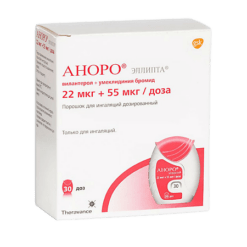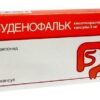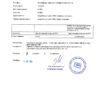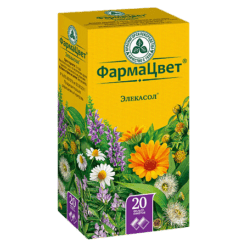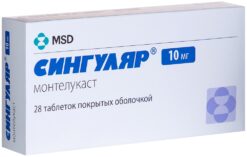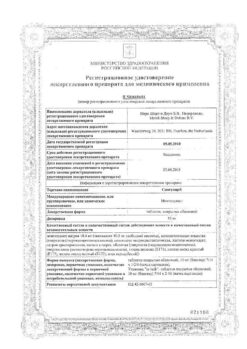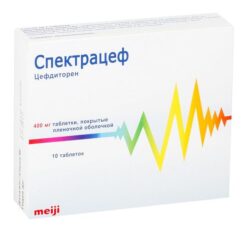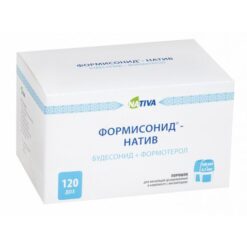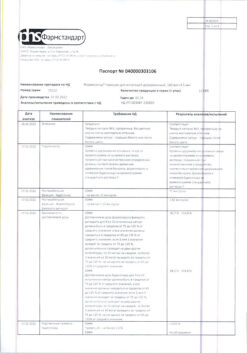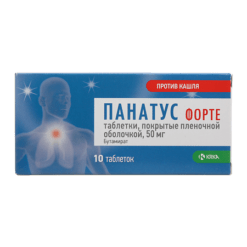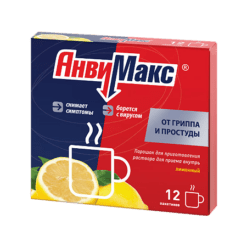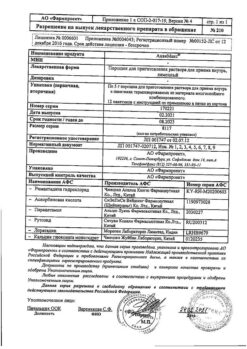Subtotal: €54.34
Budenofalk, 3 mg capsules 20 pcs
€36.52 €31.65
Budesofalc has a topical anti-inflammatory effect.
Pharmacodynamics
Budesonide is a non-halogenated GKS with anti-inflammatory, anti-allergic, anti-exudative and anti-edema properties.
These properties are based on:
- reduction of mediator release from mast cells, basophils and macrophages;
- redistribution and suppression of inflammatory cell migration, inhibiting inflammatory reactions;
- membrane-stabilizing action.
The induction of some proteins (e.g., macrocortin) may be one specific mechanism of action of budesonide. By inhibiting phospholipase A2, these proteins are involved in the metabolism of arachidonic acid and thus prevent the formation of the inflammatory mediators leukotrienes and PGs. Because the process of induction of protein synthesis requires some time, the full therapeutic effect of budesonide develops gradually.
Pharmacokinetics
Budesonide has pronounced lipophilic properties and is rapidly absorbed in the intestine due to good tissue permeability. Compared to classical GCS, budesonide has a very high affinity for receptors. Due to these properties budesofalc has a targeted local action.
Approximately 90% of budesonide is metabolized in the liver during first passage and only about 10% has systemic effects. Of this amount, 90% of budesonide is bound to albumin and due to this is in a biologically inactive form.
Indications
Mild to moderate forms of Crohn’s disease involving the ileum and/or ascending colon.
Pharmacological effect
Budenofalk has a topical anti-inflammatory effect.
Pharmacodynamics
Budesonide is a non-halogen-containing corticosteroid with anti-inflammatory, antiallergic, antiexudative and decongestant properties.
These properties are based on:
reducing the release of mediators from mast cells, basophils and macrophages;
redistribution and suppression of migration of inflammatory cells, inhibition of inflammatory reactions;
membrane stabilizing effect.
Induction of certain proteins (eg macrocortin) may be one of the specific mechanisms of action of budesonide. By inhibiting phospholipase A2, these proteins participate in the metabolism of arachidonic acid and thus prevent the formation of inflammatory mediators leukotrienes and PG. Since the process of induction of protein synthesis requires a certain period of time, the full therapeutic effect of budesonide develops gradually.
Pharmacokinetics
Budesonide has pronounced lipophilic properties and is quickly absorbed in the intestine due to good tissue permeability. Compared to classic corticosteroids, budesonide has a very high degree of affinity for receptors. Thanks to these properties, Budenofalk has a targeted local effect.
Approximately 90% of budesonide is metabolized in the liver during the first pass and only about 10% has systemic effects. Of this amount, 90% of budesonide is bound to albumin and is therefore in a biologically inactive form.
Special instructions
Budenofalk can suppress the function of the hypothalamic-pituitary-adrenal system.
Before surgery or exposure to another stress factor, additional administration of systemic corticosteroids is recommended.
Active ingredient
Budesonide
Composition
1 capsule contains:
active ingredient:
budesonide 3 mg,
excipients:
sugar pellets (sucrose 80% + corn starch 20%) – 300 mg (240 mg + 60 mg);
lactose monohydrate – 12 mg;
povidone K25 – 0.9 mg,
pellet coating:
Eudragit L (methacrylic acid copolymer, type A) – 18.3 mg;
Eudragit S (methacrylic acid copolymer, type B) – 18.3 mg;
Eudragit RS (ammonium methacrylate copolymer, type A) – 3 mg;
Eudragit RL (ammonium methacrylate copolymer, type B) – 2.1 mg;
dibutyl phthalate – 4.2 mg;
talc – 44.7 mg,
capsule wall composition:
gelatin – 61.4004 mg;
purified water – 10.8680 mg;
titanium dioxide (E171) – 1.9 mg;
red cochineal A (crimson 4R, E124) – 1.0336 mg;
iron oxide red (E172) – 0.646 mg;
sodium lauryl sulfate – 0.152 mg
Pregnancy
During pregnancy, the use of Budenofalk is possible only in cases where the expected benefit to the mother outweighs the potential risk to the fetus.
In women of childbearing age, possible pregnancy should be excluded before starting Budenofalk therapy, and reliable methods of contraception should be used during treatment.
It is still unknown whether budesonide can pass into breast milk, so breastfeeding should be avoided during treatment.
Contraindications
Hypersensitivity to budesonide or other components of the drug;
infectious intestinal diseases (bacterial, fungal, amoebic, viral infection);
severe liver dysfunction;
childhood.
With caution: tuberculosis, arterial hypertension, diabetes mellitus, osteoporosis, peptic ulcers, glaucoma, cataracts, family history of diabetes or glaucoma.
Side Effects
Sometimes side effects typical of systemic corticosteroids (Cushing’s syndrome) may occur. These side effects depend on the dose, duration of treatment, concomitant or previous treatment with other corticosteroids and individual sensitivity.
Clinical trials have shown that the frequency of side effects characteristic of GCS when using Budenofalk is significantly less (approximately 2 times) compared to the frequency of adverse effects when taking equivalent doses of prednisolone orally. However, the occurrence of side effects typical of GCS cannot be completely excluded.
The following side effects may occur
From the skin: allergic eczema, red stretch marks, petechiae, ecchymosis, steroid acne, impaired wound healing, contact dermatitis.
From the musculoskeletal system: muscle weakness, osteoporosis, aseptic necrosis of bones (femur and humeral head).
From the senses: glaucoma, cataract.
Mental disorders: depression, euphoria, irritability.
From the endocrine system: Cushing’s syndrome (moon face, obesity, diabetes mellitus, decreased glucose tolerance, sodium retention with the formation of edema, hypokalemia, decreased function or atrophy of the adrenal cortex, impaired secretion of sex hormones (amenorrhea, hirsutism, impotence).
From the cardiovascular system: increased blood pressure, increased risk of thrombosis, vasculitis (withdrawal syndrome after long-term treatment).
From the immune system: influence on the immune response (increased risk of infectious diseases).
When transferring patients from taking systemic corticosteroids to budesonide, extraintestinal symptoms (especially damage to the skin and joints) may intensify or reappear.
Storage conditions
At a temperature not exceeding 25 °C.
Shelf life
3 years.
Manufacturer
Losan Pharma GmbH, Germany
| Shelf life | 3 years. |
|---|---|
| Conditions of storage | At a temperature not exceeding 25 °C. |
| Manufacturer | Dr. Falk, Germany |
| Medication form | capsules |
| Brand | Dr. Falk |
Related products
Buy Budenofalk, 3 mg capsules 20 pcs with delivery to USA, UK, Europe and over 120 other countries.

